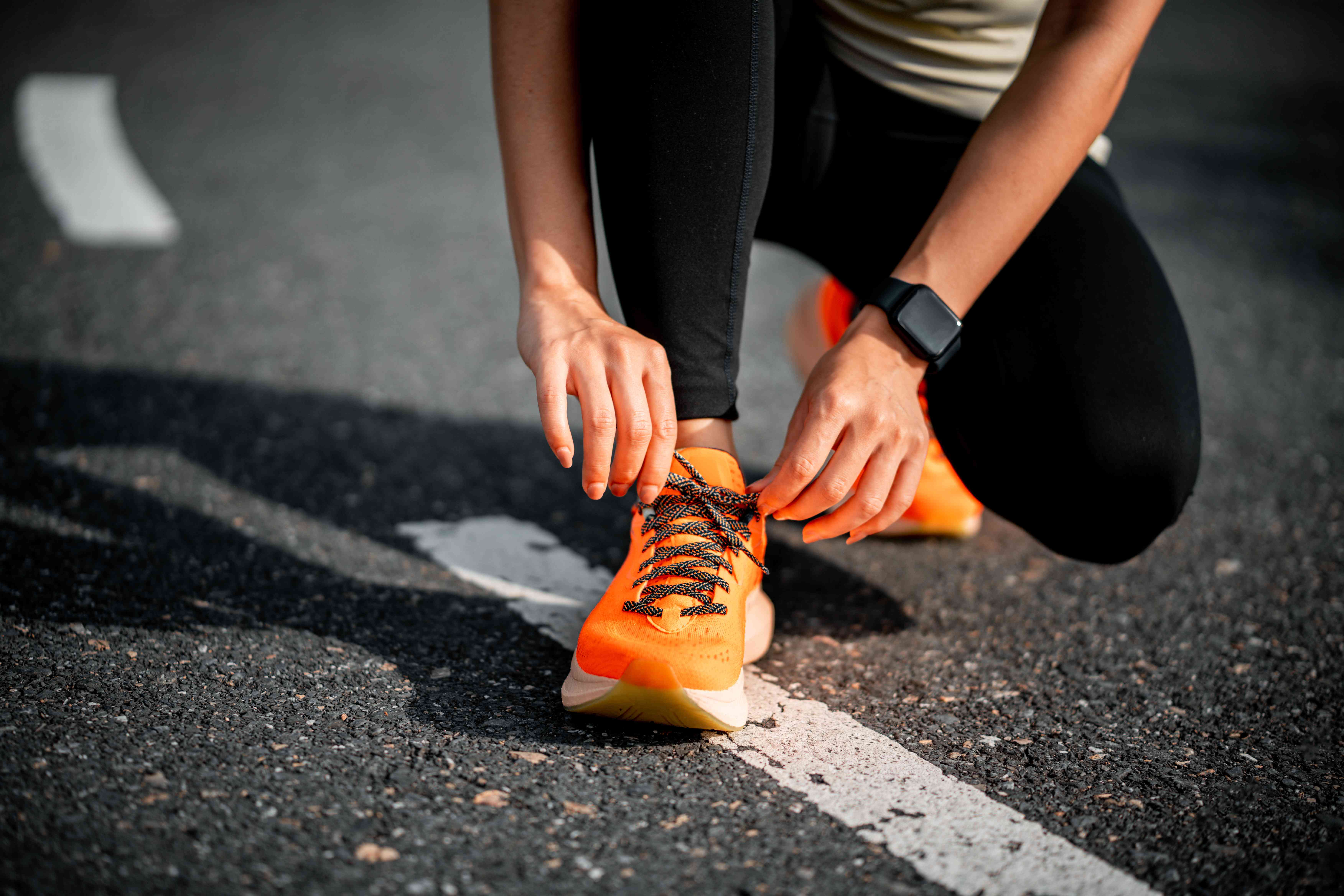Runners Who Wear This Type of Shoe Are More Likely to Get Injured, Study Finds Here's why

Runners who wear a thick heeled shoe as opposed to a more flat shoe might be prone to injury, new research has found

AN Studio / Getty Images
- New research suggests that runners who wearing thick-heeled running shoes might result in more injury than wearing flatter shoes.
- Thick-heeled shoes reduce the body’s ability to sense and react to the ground.
- To transition to a different running shoe, experts recommend taking certain precautions.
Wearing thick-heeled shoes might make runners more prone to injury, new research shows.
People who wear flatter sneakers may have a better understanding of how their feet move during running, which could lead to fewer injuries, researchers from the University of Florida Sports Performance Center reported in a Frontiers in Sports and Active Living paper published in December.
Researchers examined over six years’ worth of data about the injury history and shoe type features—weight, cushioning, and heel height—of more than 700 racially and ethnically diverse endurance runners ages 12 to 77. They also used special treadmills and motion capture videos to analyze running gait and asked participants to identify their particular running “foot strike,” which refers to the way the foot first touches the ground.
Those who wore thick-heeled sneakers while running had a higher injury rate. Runners with thicker heels also weren’t as accurate at identifying their foot strike as runners with flatter shoes, a likely factor in the high injury rates.
Scientists came to those conclusions after controlling for age, weight, running volume, and competitiveness.
“We observed that when runners are already running with their heels supported higher, they may have a false sense that the forefoot is striking first and often believe that they are ‘forefoot strikers,’” Heather K. Vincent, PhD, director of the UF Health Sports Performance Center and lead author of the study, told Health. “In fact, they are clearly rear foot strikers, and the heel of the shoe strikes first.”
It’s this confusion over foot movement that can result in injury, Lori Diamos, PT, a functional movement specialist, told Health.
“Just like standing on a foam pad challenges your balance and control, these shoes dampen your body’s ability to sense and react to the ground,” she said. “This forces you to rely more on the shoe for stability instead of your muscles and joints, increasing the risk of injuries like ankle sprains or knee pain.”
Despite the connection between thick-heeled sneakers and injuries, the researchers stress that they still don’t know whether this type of shoe actually causes injuries. Though other studies—albeit smaller ones—have also indicated that heel height and foot movement can influence running injuries, more research would be needed to establish a potential causal relationship.
How to Safely Transition to a New Running Shoe
Regardless of the ambiguity, if the study has you vying for a flatter running shoe—or any type of new running shoe, for that matter—it’s best to take certain precautions to avoid injuries.
For one, look for shoes that are tailored to your foot type but don’t force you to change your natural running style, Emma Anderson, a certified personal trainer and exercise science trainer at Fit Athletic Club, told Health.
“Running shoes should be comfortable, durable but also breathable and flexible,” she said. “Be sure the feet have enough room, and the toes aren’t crammed.”
You also want to check that the shoes are meant for the terrain you intend to run on, whether that’s the treadmill, trail, track, or street, she added.
In general, experts recommend starting slow. Take shorter runs with your new shoes and keep your old ones around so you can alternate between them for a few weeks.
“Not every shoe may be right for you,” Anderson added, “so if you notice pain or discomfort when switching to your new running shoes, stop and seek out a different shoe that may be more suitable.”
This story originally appeared on: Health News - Author:Lauryn Higgins


















